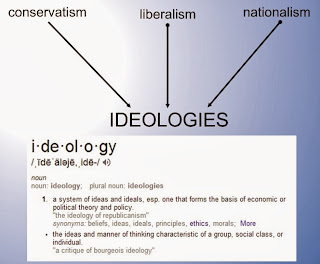The shocking things teens are doing online
These are noble pursuits, but we would be wise to remember that social media is perhaps the most popular way that our students use the technology they hold in their hands both inside and outside of our schools. There are many websites, videos, and speakers out there who do their best to warn teens about the dangers and pitfalls of social media. And there are many dangers.
But what if we approached it differently? What if we encouraged and lifted up our teens so that they truly believed it is within their power to make great and positive change through their use of social media?
But what if we approached it differently? What if we encouraged and lifted up our teens so that they truly believed it is within their power to make great and positive change through their use of social media?
Most recently my school, St. John's Prep in Danvers, Massachusetts, described people who choose to act to make positive change as UPSTANDERS. This short but powerful and honest video explains what an upstander is.
Not sure how to broach the possibility of taking action through social media? There are plenty of examples to draw inspiration from. If the teens in these examples can make change, why can't your students?
Hannah Alper is a 13 year old social media activist who calls herself a Kindraiser. Her website and Facebook page have thousands of followers because she keeps them updated with good news about people who are upstanders. Just read a few stories. They are simple, inspiring, and will leave you feeling like you can make a difference. If a middle schooler can spread positive stories and create her own movement, what can your amazing students do?
Ziad Ahmend started redefy at age 14, but he has grown his team significantly in the 3 years that have followed. With the mission to "boldly defy stereotypes, embrace acceptance and tolerance, redefine our perspectives positively, and create an active community" his team – which includes too many for this blogger to count – is comprised entirely of high school students from throughout the country. The stories page of his website is filled with true and raw stories of teens coping with stereotyping from around the globe. How can your students give others a voice when they deserve to be heard?
Trish Prabhus, now 16, read a news story in the fall of 2013 about an 11-year-old Florida girl who took her own life after facing repeated cyberbullying from her classmates. Trish was 13 at the time and immediately took action. She created an app called Rethink that is free, easy to install on iOS or Android, and asks social media users to think carefully about what they post by detecting potentially harmful words and phrases that are typed. It is nonintrusive and has been found in studies to reduce overall willingness to publish harmful posts from 71% to 4%.
Let's start changing the conversation with our students. Let's engage them by asking how they are using social media and how it makes them feel. Let's empower them by sharing the stories of their peers from all over the country and globe who choose to use the internet to be upstanders. Then, let's let them explore – with our encouragement and guidance – as they find their own path to make positive change using the powerful tools ate their fingertips.
Find out how to start these conversations in my recent post for ConnectSafely: Engage, Empower, Explore.





.jpg)
Comments
Post a Comment